Kenneth Bilchick
Numerical Differentiation-based Electrophysiology-Aware Adaptive ResNet for Inverse ECG Modeling
Feb 17, 2025Abstract:Electrocardiographic imaging aims to noninvasively reconstruct the electrical dynamic patterns on the heart surface from body-surface ECG measurements, aiding the mechanistic study of cardiac function. At the core of ECGI lies the inverse ECG problem, a mathematically ill-conditioned challenge where small body measurement errors or noise can lead to significant inaccuracies in the reconstructed heart-surface potentials. %Leveraging a well-developed electrophysiological (EP) model, our previous study developed an EP-informed deep learning framework, demonstrating promising effectiveness in improving cardiac map predictions. To improve the accuracy of ECGI and ensure that cardiac predictions adhere to established physical principles, recent advances have incorporated well-established electrophysiology (EP) laws into their model formulations. However, traditional EP-informed models encounter significant challenges, including overfitting to EP constraints, limitations in network scalability, and suboptimal initialization. These issues compromise prediction accuracy and stability, hindering their effectiveness in practical applications. This highlights the need for an advanced data analytic and predictive tool to achieve reliable cardiac electrodynamic restoration. Here, we present a Numerical Differentiation-based Electrophysiology-Aware Adaptive Residual neural Network (EAND-ARN) for robust inverse ECG modeling. Our method employs numerical differentiation to compute the spatiotemporal derivative, enabling EP constraints to be applied across a local spatiotemporal region, thereby strengthening the overall EP enforcement. Additionally, we design an adaptive residual network to improve gradient flow, enhancing predictive accuracy and mitigating issues with poor initialization. Experimental results show that EAND-ARN significantly outperforms existing methods in current practice.
Multimodal Learning To Improve Cardiac Late Mechanical Activation Detection From Cine MR Images
Feb 28, 2024
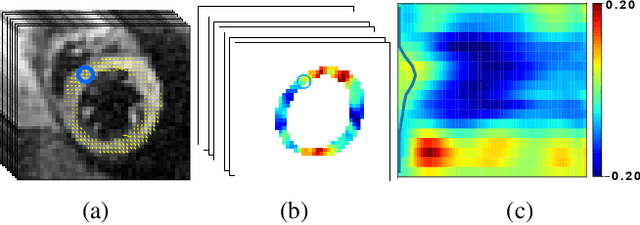
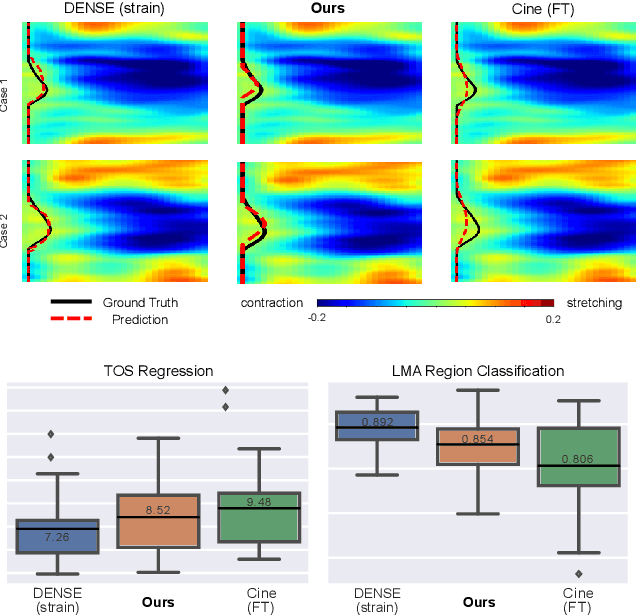
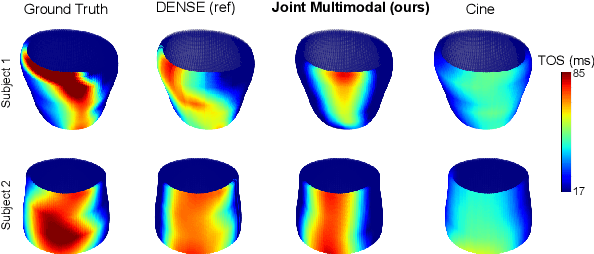
Abstract:This paper presents a multimodal deep learning framework that utilizes advanced image techniques to improve the performance of clinical analysis heavily dependent on routinely acquired standard images. More specifically, we develop a joint learning network that for the first time leverages the accuracy and reproducibility of myocardial strains obtained from Displacement Encoding with Stimulated Echo (DENSE) to guide the analysis of cine cardiac magnetic resonance (CMR) imaging in late mechanical activation (LMA) detection. An image registration network is utilized to acquire the knowledge of cardiac motions, an important feature estimator of strain values, from standard cine CMRs. Our framework consists of two major components: (i) a DENSE-supervised strain network leveraging latent motion features learned from a registration network to predict myocardial strains; and (ii) a LMA network taking advantage of the predicted strain for effective LMA detection. Experimental results show that our proposed work substantially improves the performance of strain analysis and LMA detection from cine CMR images, aligning more closely with the achievements of DENSE.
CARNA: Characterizing Advanced heart failure Risk and hemodyNAmic phenotypes using learned multi-valued decision diagrams
Jun 11, 2023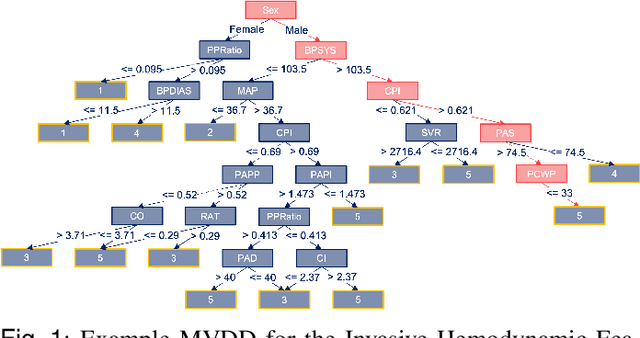

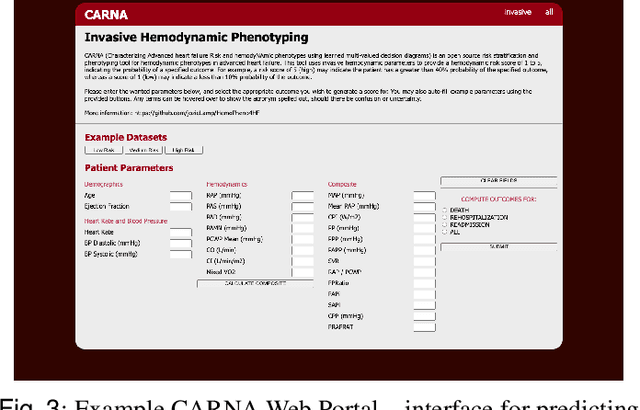
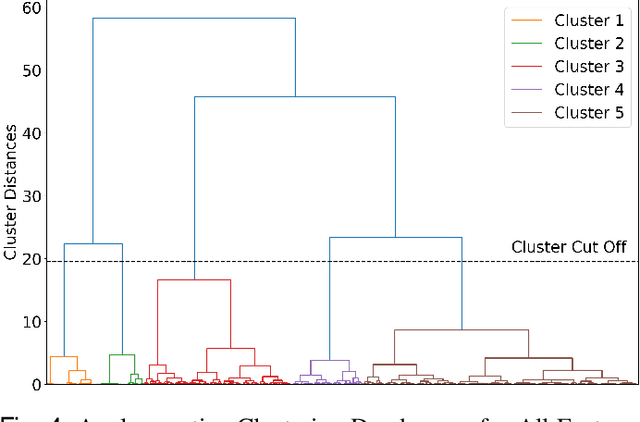
Abstract:Early identification of high risk heart failure (HF) patients is key to timely allocation of life-saving therapies. Hemodynamic assessments can facilitate risk stratification and enhance understanding of HF trajectories. However, risk assessment for HF is a complex, multi-faceted decision-making process that can be challenging. Previous risk models for HF do not integrate invasive hemodynamics or support missing data, and use statistical methods prone to bias or machine learning methods that are not interpretable. To address these limitations, this paper presents CARNA, a hemodynamic risk stratification and phenotyping framework for advanced HF that takes advantage of the explainability and expressivity of machine learned Multi-Valued Decision Diagrams (MVDDs). This interpretable framework learns risk scores that predict the probability of patient outcomes, and outputs descriptive patient phenotypes (sets of features and thresholds) that characterize each predicted risk score. CARNA incorporates invasive hemodynamics and can make predictions on missing data. The CARNA models were trained and validated using a total of five advanced HF patient cohorts collected from previous trials, and compared with six established HF risk scores and three traditional ML risk models. CARNA provides robust risk stratification, outperforming all previous benchmarks. Although focused on advanced HF, the CARNA framework is general purpose and can be used to learn risk stratifications for other diseases and medical applications.
 Add to Chrome
Add to Chrome Add to Firefox
Add to Firefox Add to Edge
Add to Edge